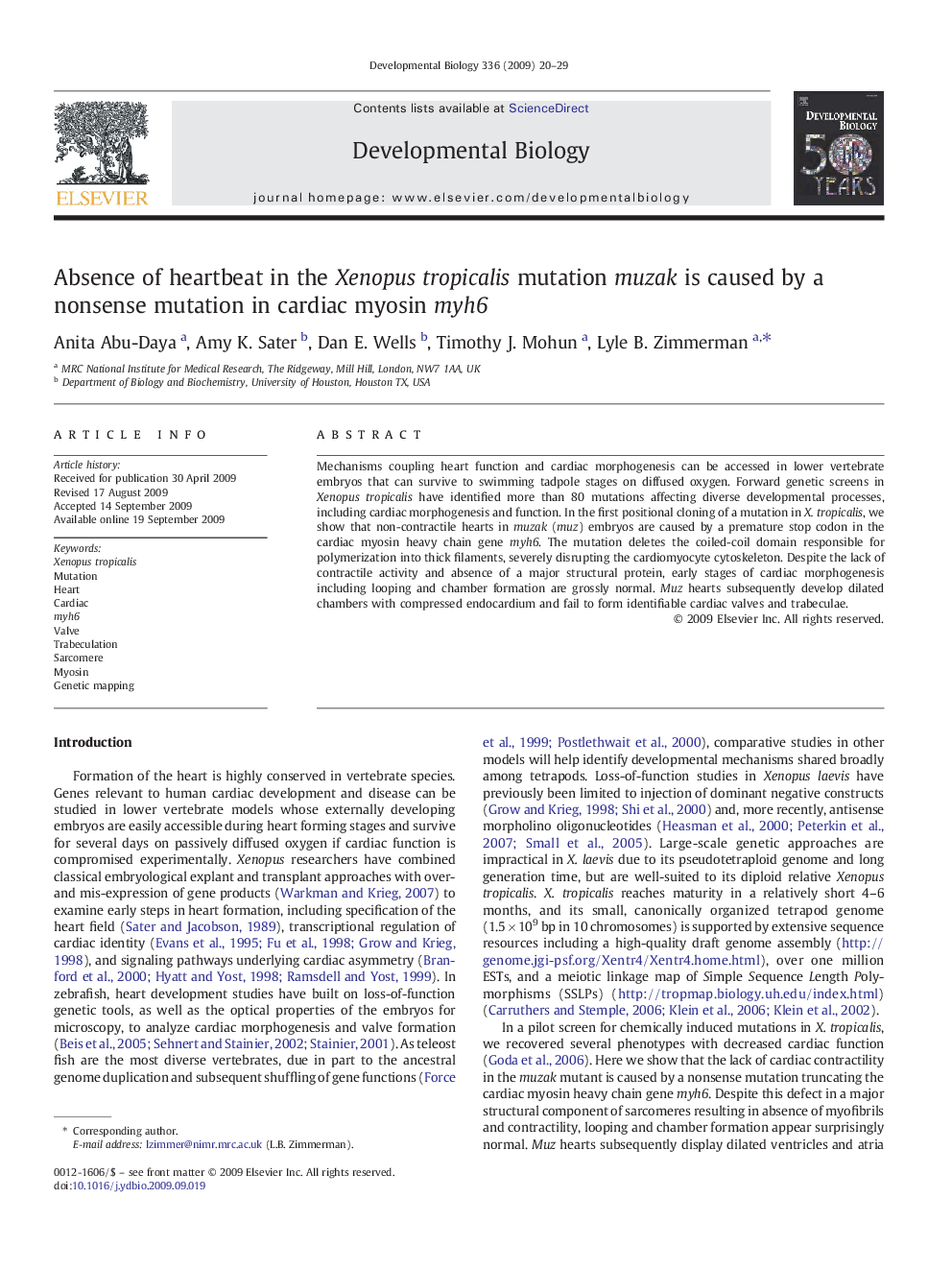| Article ID | Journal | Published Year | Pages | File Type |
|---|---|---|---|---|
| 10933176 | Developmental Biology | 2009 | 10 Pages |
Abstract
Mechanisms coupling heart function and cardiac morphogenesis can be accessed in lower vertebrate embryos that can survive to swimming tadpole stages on diffused oxygen. Forward genetic screens in Xenopus tropicalis have identified more than 80 mutations affecting diverse developmental processes, including cardiac morphogenesis and function. In the first positional cloning of a mutation in X. tropicalis, we show that non-contractile hearts in muzak (muz) embryos are caused by a premature stop codon in the cardiac myosin heavy chain gene myh6. The mutation deletes the coiled-coil domain responsible for polymerization into thick filaments, severely disrupting the cardiomyocyte cytoskeleton. Despite the lack of contractile activity and absence of a major structural protein, early stages of cardiac morphogenesis including looping and chamber formation are grossly normal. Muz hearts subsequently develop dilated chambers with compressed endocardium and fail to form identifiable cardiac valves and trabeculae.
Related Topics
Life Sciences
Biochemistry, Genetics and Molecular Biology
Cell Biology
Authors
Anita Abu-Daya, Amy K. Sater, Dan E. Wells, Timothy J. Mohun, Lyle B. Zimmerman,
